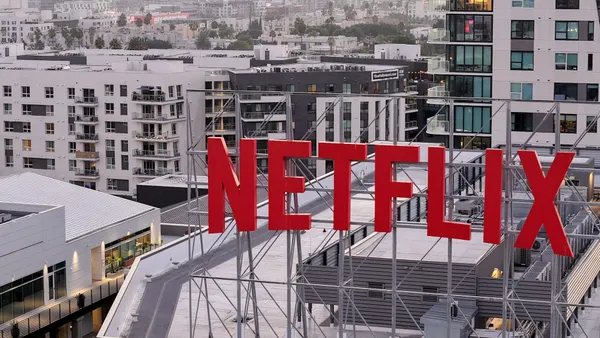Dive Brief:
-
At its peak in January, a bot network scheme called Icebucket impersonated more than 2 million people and generated 1.9 billion ad requests — or 28% of total volume — on programmatic platforms for connected TV (CTV), per a blog post shared by White Ops with Marketing Dive. The cybersecurity and ad verification firm claims it is the biggest CTV ad fraud operation in history.
-
Icebucket counterfeited more than 300 publishers, tricking advertisers into thinking that real people were seeing their ads. Instead, the viewing activity was artificially created with sophisticated bots that impersonated the activities of human beings. White Ops blocked the Icebucket attack, which is still ongoing.
-
Roku, the over-the-top platform with 39.8 million active accounts, confirmed with White Ops that there wasn't any Icebucket activity on its platform. The most frequently spoofed devices included Roku (46% of fake traffic), Samsung Tizen Smart TV (27%), Google TV (21%) and Android mobile devices (6.1%), per White Ops.
Dive Insight:
The scale of the Icebucket CTV ad fraud operation uncovered by White Ops is alarming, indicating vulnerabilities in parts of the programmatic advertising marketplace. According to its analysis, Icebucket originated in a part of the programmatic supply chain that's less transparent without the availability of authorized reselling tools like Sellers.json, and where media buyers and publishers don't have a direct relationship. Icebucket hid its bots in certain server-side ad insertion (SSAI) video ad impressions that platforms use to provide a more seamless viewer experience without delays. Marketers need to be mindful of these potential pitfalls and work with partners to avoid getting scammed.
While White Ops didn't provide an estimate of how much Icebucket cost advertisers, such ad fraud schemes are damaging to a growing segment of the media marketplace. As millions of households cancel cable and TV satellite service to connect their TVs directly to the internet, advertisers are forecast to increase media spending to CTV platforms that are more interactive and highly addressable. CTV significantly extends the reach of advertising over standard ad experiences, according to a study by the Association of National Advertisers (ANA) and analytics firm Innovid. CTV ad spend had been forecast to reach $10.8 billion in the U.S. by next year, up from $6.9 billion in 2019, eMarketer estimated last year, though the researcher later said the coronavirus pandemic has made the outlook for all media spending more uncertain. If ad fraud becomes an ongoing problem with CTV, this could also put a dent in marketers' interest in spending on the platform.
The Icebucket operation highlights how ad fraud has extended from websites and mobile devices into CTV platforms. It's a costly problem for advertisers, with Juniper Research estimating that ad fraud among online, mobile and in-app channels would grow 21% to $42 billion last year among online, mobile and in-app channels. An estimated 18% over-the-top (OTT) TV ad inventory is fraudulent, according to a study by nonprofit research and development consortium AdLedger.













